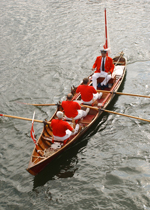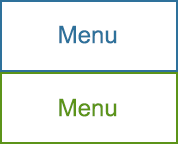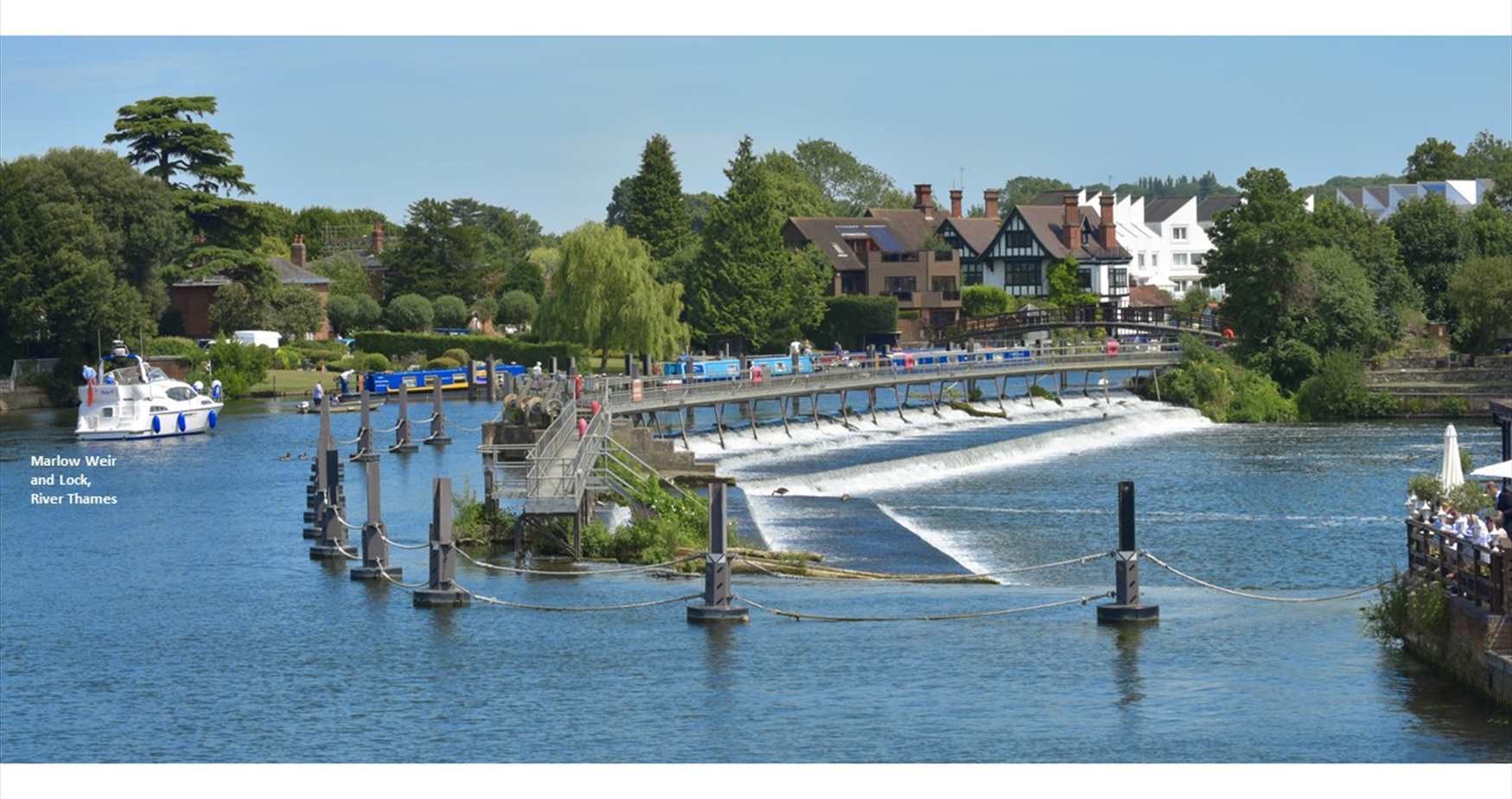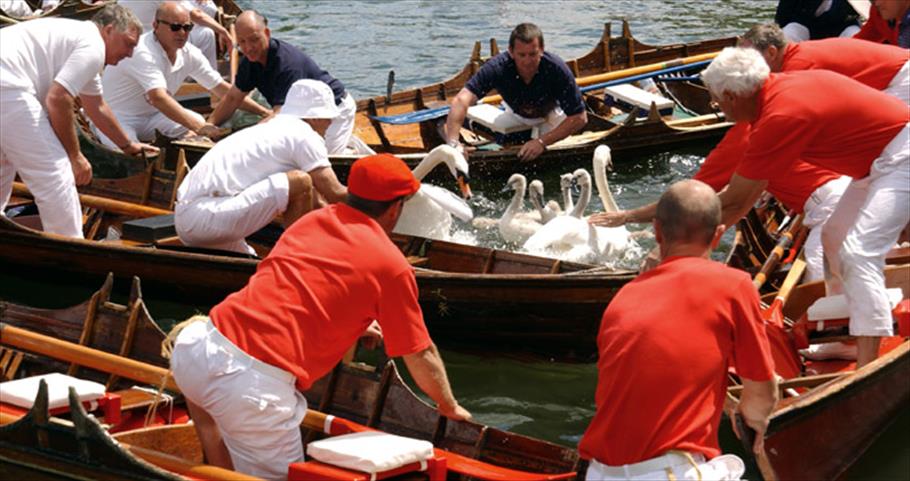You are here: Events > Royal Swan Upping
Royal Swan Upping
History
 The mute swan appears to have been given Royal status in the 12th century and by 1378 there was a ‘Keeper of the King’s Swan. The first law in 1482/83 ‘The Lawes, Orders and Customs for Swans stated that any swans owned by those who pay less than 5 marks a year Freehold were forefeit to the King. The Dyers and the Vintners Companies are now the only owners of private swans on the Thames.
The mute swan appears to have been given Royal status in the 12th century and by 1378 there was a ‘Keeper of the King’s Swan. The first law in 1482/83 ‘The Lawes, Orders and Customs for Swans stated that any swans owned by those who pay less than 5 marks a year Freehold were forefeit to the King. The Dyers and the Vintners Companies are now the only owners of private swans on the Thames.
The first documentary reference to the Vintners owning swans comes from 1509, when the Company's "Under-Swanherd", named James, was paid 4 shillings at the time of the 'great frost' for 'upping the Master's swans', plus a further 4 pence for boat hire at the same time. The Company's right to own swans is generally said to be 'by prescription'.
This specific legal expression implies that the right has been exercised for so long that it has never been challenged. In theory it stretches as far back as 'legal memory' itself, fixed by statute as starting from the accession of Richard I in 1189. The Vintners have therefore owned swans since 'time immemorial', in the correct legal sense of that common phrase.
What is Swan Upping?
Swan Upping plays an important role in the conservation of the mute swan and involves The Queen’s Swan Warden collecting data, assessing the health of young cygnets and examining them for any injuries. Cygnets are extremely vulnerable at this early stage in their development and Swan Upping affords an opportunity to help both adults and cygnets that might otherwise go untreated.
The Royal Swan Uppers, who wear the scarlet uniform of Her Majesty The Queen, travel in traditional rowing skiffs together with Swan Uppers from the Vintners’ and Dyers’ livery companies over 5 days. Swan Upping takes place on the Thames between Sunbury and Abingdon in July.
Swan Upping 2021 will commence on Monday 19th July at Sunbury on Thames and will finish on Friday 23rd July at Abingdon Bridge, Oxfordshire provided there are no Government restrictions in place relating to Covid-19.
Recreation of Royal Swan Upping by Julia Fullerton-Batten
A worldwide acclaimed and exhibited fine-art photographer. Her fascination has led to a project recreating some of the cultural and historical episodes of the Thames’ past - Old Father Thames. Each photograph is carefully researched and recreated. Short videos capture behind the scenes, making of the photographs.
Statement from The Queen's Swan Marker, David Barber, MVO
Swans often find it difficult to survive during the winter months as the supply of river weed and vegetation, which is their natural food resource, is in short supply in rivers and lakes. The lack of natural food mainly affects large flocks that rely on members of the public to supplement their diet. This winter has brought another problem for the swans to contend with; avian Influenza (HPAI) H5N8. This disease has already killed many hundreds of swans throughout the country in 2020. Public Health England advises the risk to humans from avian Influenza is extremely low.
We would ask members of the public to continue feeding swans, subject of course to Covid-19 Government regulations. This will help in two ways; it will enable the swans to survive the cold winter months, keeping them healthy and able to fight off infection from avian Influenza. It will also prevent hungry swans from flying to new territories in search of food which could transmit the disease to further locations.
The ideal food for swans includes:
- Leafy greens
- Bread (not mouldy)
- Wheat
- Swan pellets
- Poultry corn (only in shallow water where they can reach the bottom)
Please remember that swans should always be fed in the water. Advice on swans and feeding can always be found from your local swan rescue organisation.
.png)






